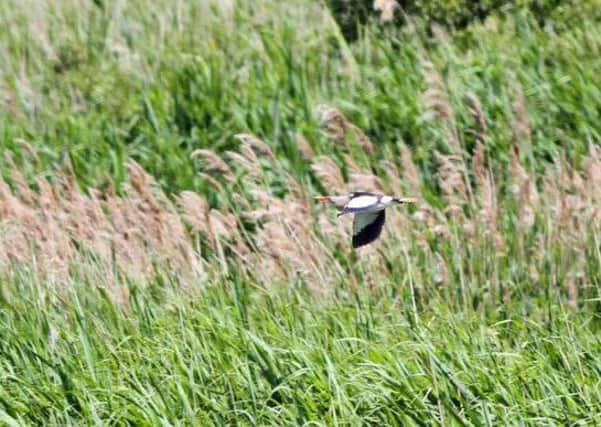Birdwatch: Patience pays off in wait for elusive wetlands cousin


A little bittern, the smallest of Europe’s herons, was first seen on Tuesday by volunteer warden Keith Pickering on a part of the reserve where there is no public access. Since then it has been seen occasionally in flight over the reeds.
Little bitterns are summer visitors to Europe from Africa including wetlands along the coasts of France, Belgium and the Netherlands.
Advertisement
Hide AdAdvertisement
Hide AdBreeding; long suspected in this country, was finally confirmed in 1984 when a pair reared three young on the Yorkshire Wildlife Trust’s Potteric Carr reserve, Doncaster.
Then in 2010 a pair bred on the RSPB’s Ham Wall reserve in Somerset and they now seem to have become established there.
Little bitterns might be present at other sites but are extremely difficult to observe. They are only the size or a coot and weigh less than a small orange so can slip through dense reeds with no signs of movement or climb up a single reed stem like a warbler.
Often the only indication they are present is the male’s spring call, a bizarre croaking bark, otherwise they seldom break cover.
Advertisement
Hide AdAdvertisement
Hide AdThis is the second time Keith Pickering has found a rarity at Old Moor; he was the first to photograph a first-summer night heron on the reserve in August 2013. The reserve is also enjoying a good run of sightings, the last being a gull-billed tern on June 16.
Sightings along the Yorkshire coast included a male serin at the Warren, Spurn.
Poor spring weather has effected the little tern colony at Beacon Ponds with an average of one egg per nest compared with three last year. Visitors are asked to view the colony from Long Bank only to avoid disturbing the birds.
There have been the first signs of the return wader passage with wood sandpipers in several places, including North Cave wetland and three at Swillington Ings, Leeds. Spotted redshanks, ruff and greenshanks were seen there and at Fairburn Ings, and seven spotted redshanks at Blacktoft Sands also, green sandpipers, ruff and greenshank.
Advertisement
Hide AdAdvertisement
Hide AdA stone curlew was seen on two or three occasions last Friday on a set-aside strip at Hornsea Mere.
The pair of Montagu’s harriers is showing well at Blacktoft Sands with frequent food passes between them and is believed to have three young, A drake ring-necked duck is still present.
A drake green-winged teal was seen at the Yorkshire Wildlife Trust’s Staveley reserve, North Yorkshire.
Michael Flowers is taking bookings for his ten-week autumn birdwatching course starting on September 23. Many sessions involve identifying birds on migration. Most vacancies are on Tuesday mornings, Friday mornings and Friday afternoons, but limited places are available on some other sessions. To book or for more details, please contact him at [email protected] or on 07946 625688.